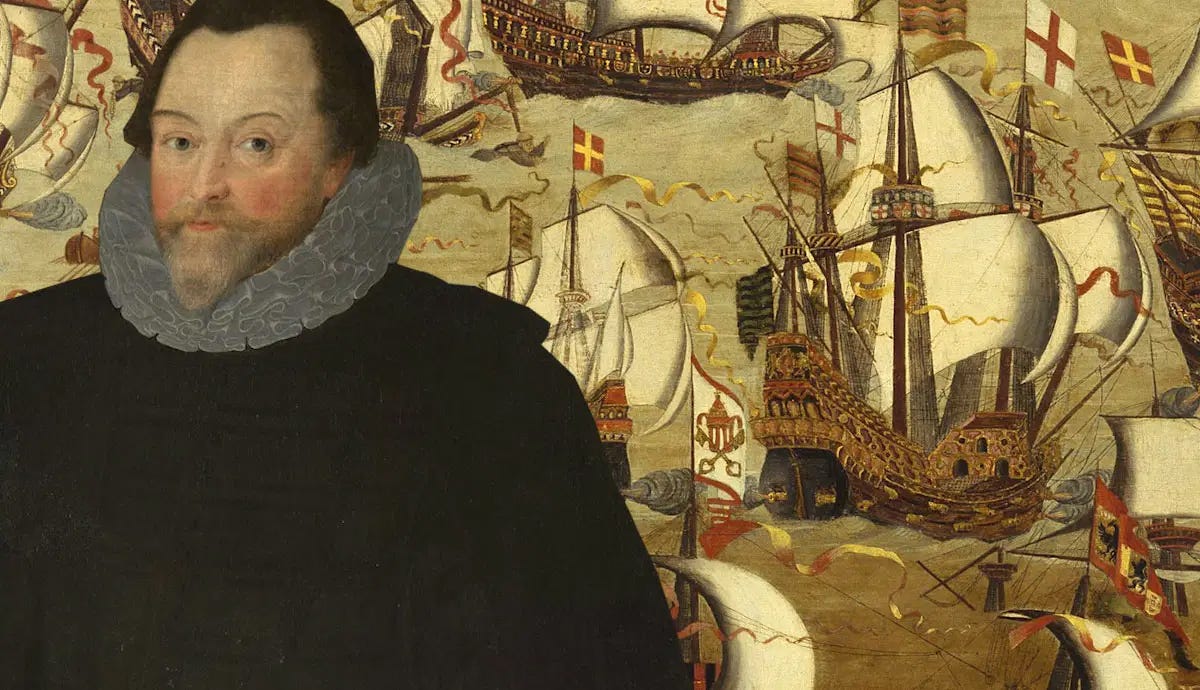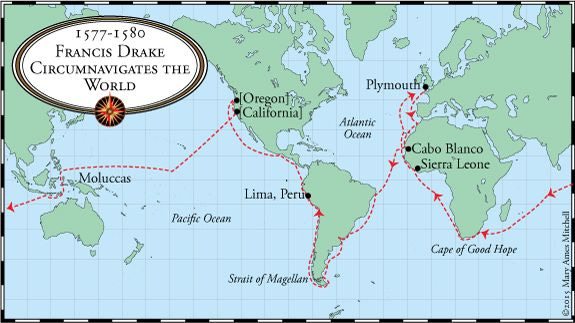Sir Francis Drake: The Englishman Who Sailed Around the World
Today in History: 26th September 1580
On 26th September 1580, the Golden Hind sailed into Plymouth harbour carrying treasures beyond imagining. On her deck stood a man whose name would be etched forever into history: Sir Francis Drake. After nearly three years at sea, Drake had completed the first circumnavigation of the globe by an Englishman.
Drake’s voyage began in December 1577 under orders from Queen Elizabeth I. Officially, it was a mission of exploration and trade. Unofficially, it was an opportunity to harass Spain, England’s powerful Catholic rival and to raid her treasure fleets in the Americas.
Drake set out with a small fleet of five ships and around 160 men. The journey was perilous from the start. Storms battered his vessels as they attempted to round Cape Horn at the southern tip of South America, and dissent among his officers culminated in the execution of Thomas Doughty for mutiny. Only the Golden Hind survived the voyage into the Pacific.
Once in the Pacific, Drake unleashed a campaign of plunder against Spanish possessions. He raided coastal towns, captured richly laden ships, and seized gold, silver, and precious spices. The Spanish, who considered the Pacific Ocean their private domain, were stunned by the audacity of this English privateer.
Drake pressed north along the coast of South America, seeking a route back to the Atlantic but failing to find the fabled Northwest Passage. He did, however, land somewhere along the coast of present-day California, claiming the territory for Elizabeth and naming it “Nova Albion”.
With no safe way back through Spanish waters, Drake decided to continue westward. The Golden Hind crossed the Pacific to the Moluccas (the Spice Islands), where Drake secured valuable cloves. From there, he navigated through treacherous waters, across the Indian Ocean, around the Cape of Good Hope, and northward up the coast of Africa.
When the Golden Hind returned to Plymouth, having covered more than 36,000 miles, only 60 of the original crew returned. Queen Elizabeth, delighted with the riches and the blow struck against Spain, visited the ship at Deptford the following spring. There, in a gesture heavy with symbolism, she knighted Francis Drake on the deck of the Golden Hind.
Drake’s circumnavigation was more than a feat of seamanship. It was a declaration that England would no longer be confined to the margins of European power. The voyage struck at Spanish supremacy, opened new horizons for English trade, and inspired generations of seafarers.
Drake would go on to further exploits as hero of the Armada in 1588 and scourge of Spanish shipping, but his final years brought disappointment. In 1595, an expedition to the Caribbean ended in disaster. Spanish forces, now better prepared for his raids, repelled him at Puerto Rico. Soon after, Drake contracted dysentery off the coast of Panama. On January 28, 1596, he died aboard a ship at the age of approximately 55. He was buried at sea in full armour, his body consigned to the waters near Portobelo. Though his life ended far from home in failure and illness, Drake’s legend endures. His circumnavigation in 1580 secured his place in history as one of England’s greatest seafarers.
CLICK HERE to read more History and Happenings articles.
If you love history, then you’ll love The Chronicles of St Mary’s series by Jodi Taylor.





